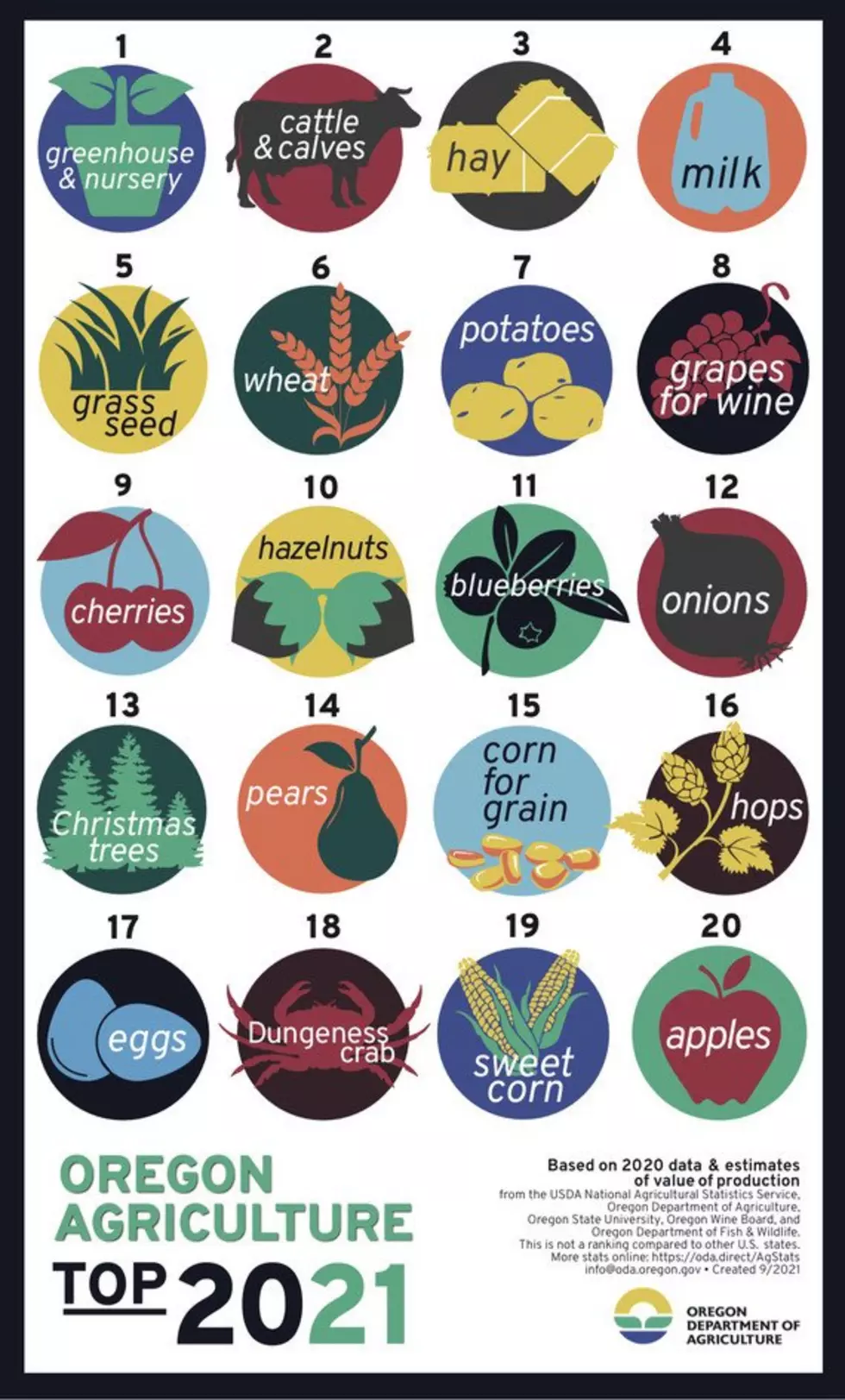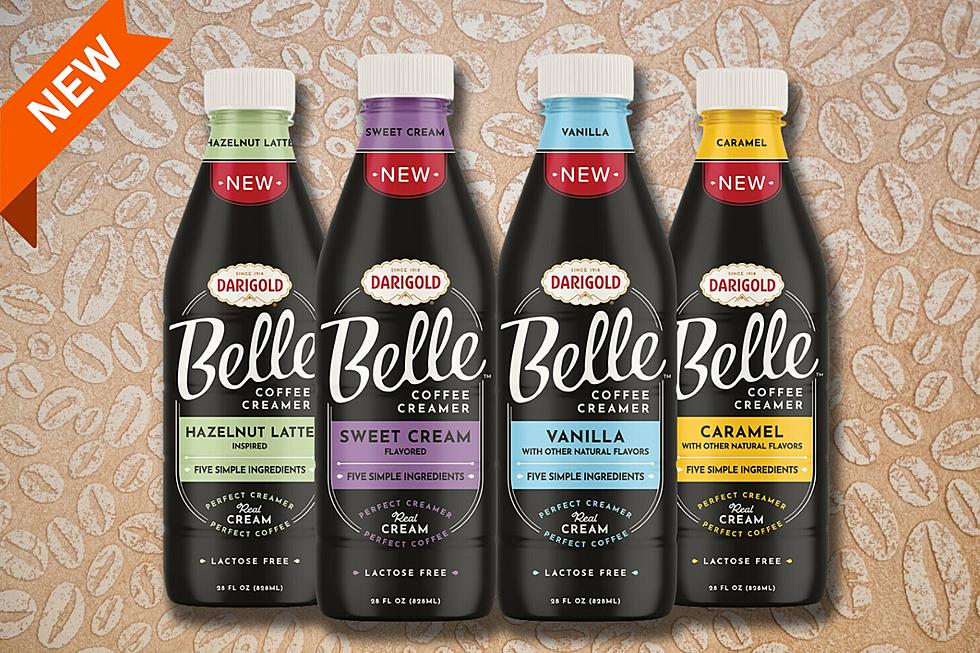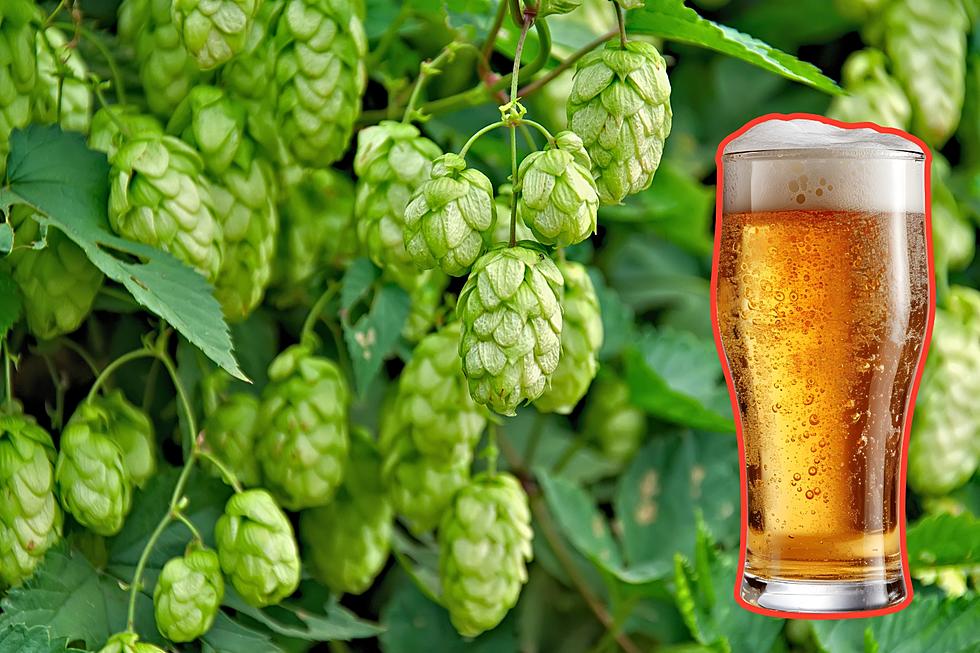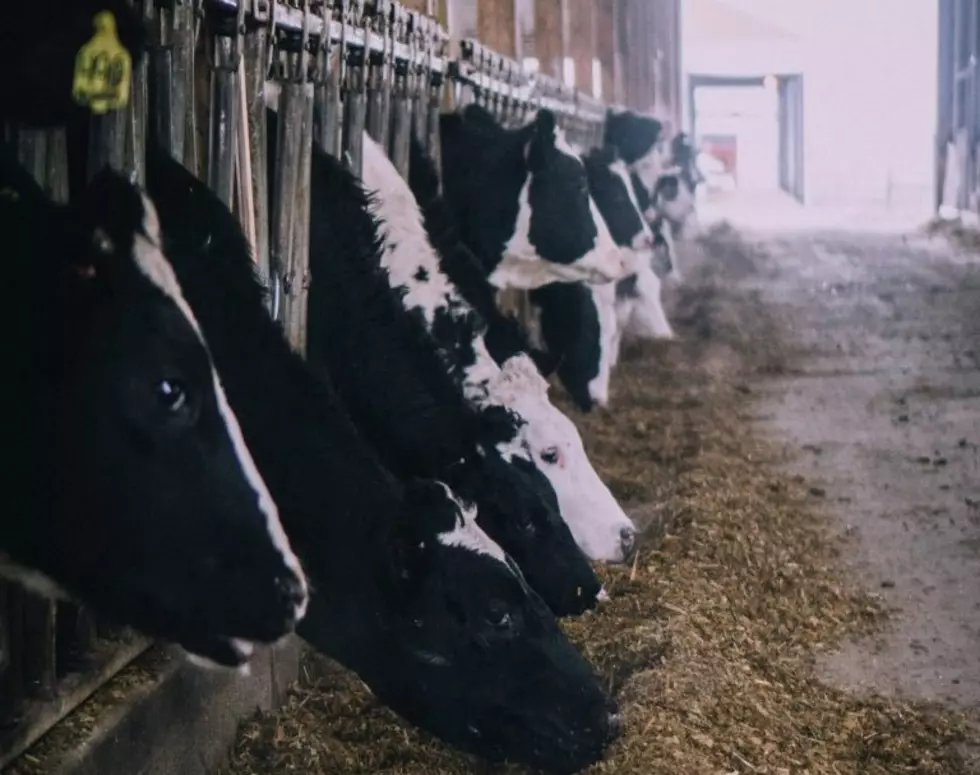
Nursery Remains Tops In Oregon; Cherries, Hazelnuts New To The Top Ten
NASS is out with the top commodities for Oregon in 2020. The state’s greenhouse and nursery industry experienced a COVID-19 boon with value of production topping $1 billion for a second year in a row. Industry experts say the “stay home” orders boosted sales nationwide as more people took up gardening and landscaping. Coming in at #2 was Cattle & calves with a production value of nearly $600-million. Historically, greenhouse and nursery and cattle and calves remain two of the top commodities by value of production.
Hay came in at #3, with milk at #4 and grass seed rounding out the top five. New to this year’s top ten commodity list was cherries, which saw a 78% year over year increase, and hazelnuts which reported a record year with a 57% jump from 2019’s value. Oregon is currently the third largest producer of cherries in the nation, supplying 17% of the U.S. market. Meanwhile, hazelnut acreage has grown over the past ten years from about 30,000 acres to over 80,000 acres. Nearly 100 percent of the hazelnuts produced commercially in the U.S. are grown in the Willamette Valley.
Oregon’s top-20 valued commodities by value for the 2020 crop year are:
- Greenhouse & nursery, $1,188,911,000
- Cattle & calves, $587,848,000
- Hay, $569,160,000
- Milk, $557,348,000
- Grass seed, $458,367,000
- Wheat, $273,760,000
- Potatoes, $216,810,000
- Grapes for wine, $157,900,000
- Cherries, $133,826,000
- Hazelnuts, $132,300,000
- Blueberries, $119,648,000
- Onions, $118,665,000
- Christmas trees, $106,912,000
- Pears, $97,552,000
- Corn, grain, $77,542,000
- Hops, $74,812,000
- Eggs, $72,999,000
- Dungeness crab, $72,643,709
- Sweet corn, $41,034,000
- Apples, $39,208,000
A majority of Oregon’s agricultural commodities in the top twenty saw an increase in value of production including eggs (+29%), onions (+9%), potatoes (9%), sweet corn (+8%), Dungeness crab (+7%), hops (+4%), Christmas trees (+2%), apples (+1%), and milk (+1%).
On the downside, grapes for wine experienced a decrease of 34%, while hay (-16%), blueberries (-11%), grass seed (-11%), pears (-10%), cattle & calves (-6%), and wheat (-3%) also recorded production value decreases. Rounding out the top twenty ag and fisheries commodities by value of production:
Hemp is not included in the agricultural commodities list. Beginning in October, NASS will begin collecting information on the acreage, yield, production, price, and value of hemp in the United States. Results will be available in 2022.
In 2020 37,200 farms and ranches produced more than 225 commodities in Oregon.
If you have a story idea for the PNW Ag Network, call (509) 547-1618, or e-mail gvaagen@cherrycreekmedia.com
More From PNW Ag Network









